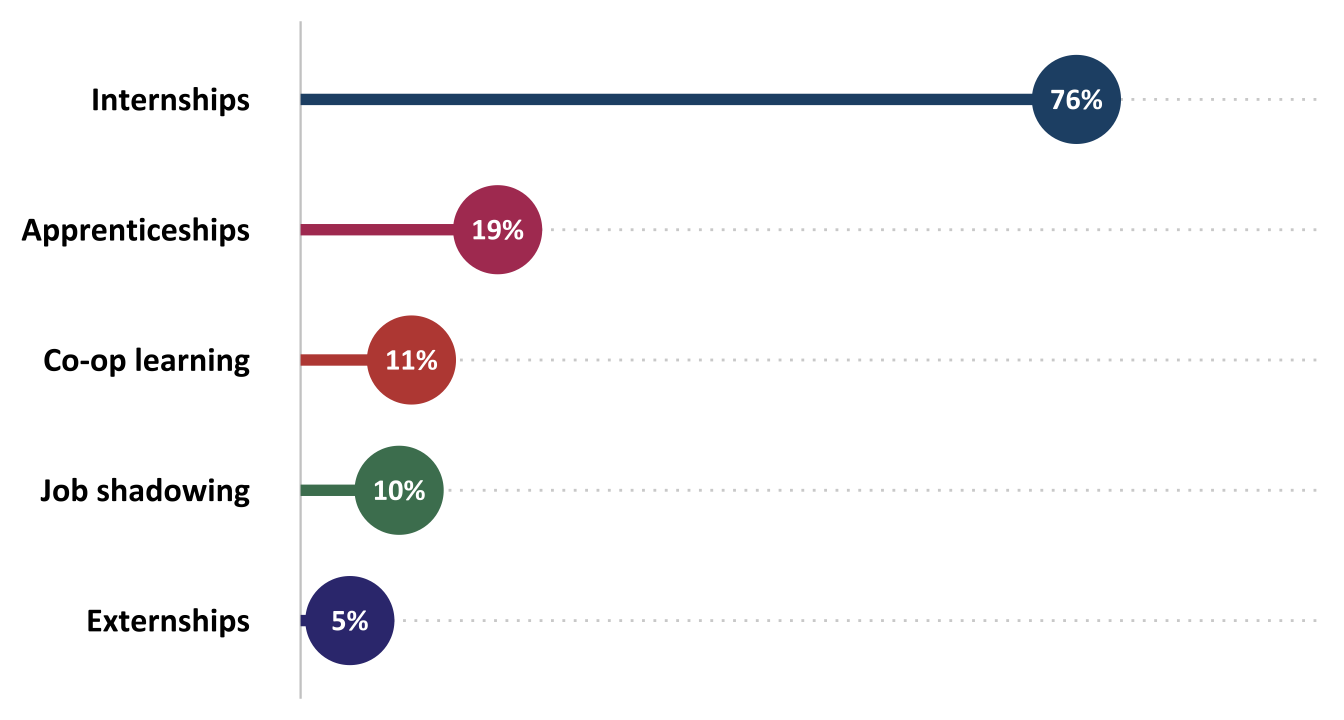
Chapter 5 Workplace-Based Learning
5.0.0.0.1 Workplace-based learning includes any situation in which a student gains experience at a work site, such as through internships, apprenticeships, co-op learning, and job shadowing. Research indicates that such experiences contribute to students’ confidence in their abilities and enhance employability skills, such as problem-solving, communication, and professionalism (Jackson, 2014).
5.0.0.0.2 ATE PIs whose projects offered workplace-based learning were asked about key characteristics of the workplace-based learning opportunities they offered and about the number of students who participated in these activities in 2021.
5.1 Workplace-Based Learning
5.1.0.1 Twenty-three percent of ATE projects provided workplace-based learning opportunities for students.
In 2021, 2,330 students participated in workplace-based learning opportunities offered by 83 ATE projects. An additional 13 ATE projects reported offering field trips to business and industry sites. The 23% of projects that provided workplace-based learning in 2021 excludes the 13 projects that only reported offering field trips.
5.1.0.1.1 Most ATE projects offered workplace-based learning through internships and apprenticeships.

Figure 5.1: Percentage of ATE projects that offered each type of workplace-based learning (n=83)
The median number of weekly hours that students spent in a workplace-based learning activity ranged from 4 to 21, and the median number of weeks spent in an activity ranged from 2 (job shadowing) to 42 (apprenticeships).
Respondents discussed a variety of benefits to both students and employers. As one respondent noted:
“Students are able to connect understanding of classroom concepts with their ability to perform as expected in the workplace; they get a good idea of the level of coursework they need to complete in order to reach their career goals; they gain a better idea of what direction they would like to head when they graduate.”
Survey respondents reported on the characteristics of the workplace-based learning their projects offered. The table shows variation both within and across activities.
| Internships (n=63) | Apprenticeships (n=16) | Co-op learning (n=9) | |
|---|---|---|---|
| Required by program | 51% | 69% | 33% |
| Academic credit | 62% | 75% | 78% |
| Coupled with a course | 46% | 88% | 33% |
| Received payment | 75% | 81% | 67% |